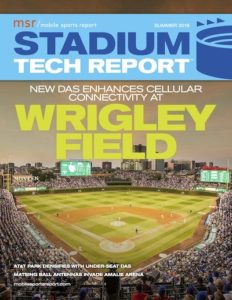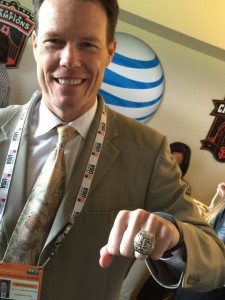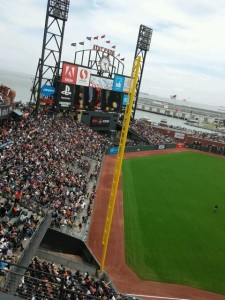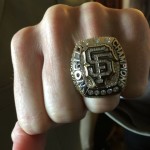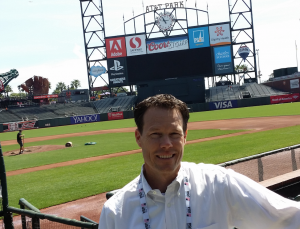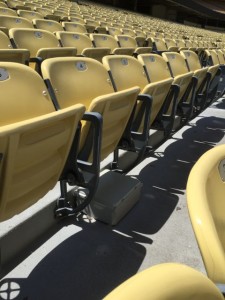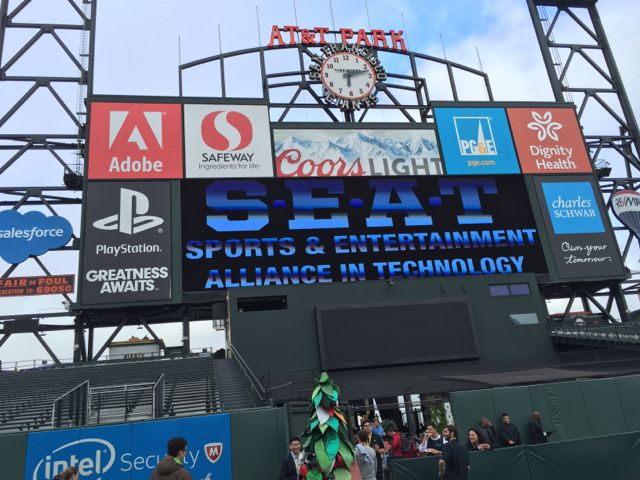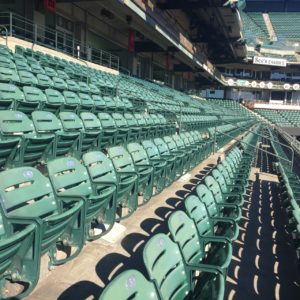
Under-seat Wi-Fi enclosures at AT&T Park now have DAS antennas in them as well. Credit: SF Giants/AT&T
By installing cellular antennas inside 916 existing under-seat Wi-Fi antenna enclosures, AT&T and the Giants made a huge bet that by densifying the coverage, they could significantly improve the cellular experience for AT&T customers at the ballpark.
While admitting that data accumulated so far is only a small sample, the Giants and AT&T are nonetheless convinced their move is already a win, as early season declines in Wi-Fi use and increases in cellular data use seem to point toward a conclusion that fans are using more cellular service because it’s providing a better connection. The change is so effective that it’s even making the Giants’ networking team wonder if Wi-Fi will be necessary moving forward, if other carriers added the same kind of network capacity to their cellular infrastructures.
‘Most significant upgrade, ever’
Editor’s note: This profile is from our latest STADIUM TECH REPORT, an in-depth look at successful deployments of stadium technology. Included with this report is a profile of a new MatSing ball DAS deployment at Amalie Arena, a new DAS for the Chicago Cubs at Wrigley Field, and a look at the networks inside the new Banc of California Stadium in Los Angeles! DOWNLOAD YOUR FREE COPY now!
With technologies like the multiple proposed iterations of 5G cellular and other plans to mine new spectrum territory on the near horizon, large public venues looking to keep up with wireless data demands are seeking whatever ways they can to keep customers connected. Historically, AT&T Park has been in the lead in this arena, from being the first pro venue to provide Wi-Fi to fans (in 2004) to staying committed to pushing the envelope, including the pioneering move of putting Wi-Fi access points under seats to improve and expand coverage.
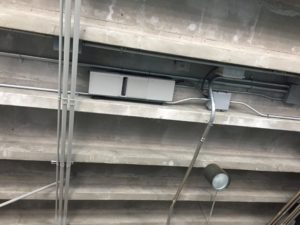
New Ericsson radio gear (long grey box) powers the new under-seat DAS antennas at AT&T Park. Credit: AT&T
At the past three Super Bowls, Verizon Wireless has increased DAS capacity by using extra DAS antenna installations under seats (Super Bowl 50, Levi’s Stadium), under seating-area concrete (Super Bowl 51, NRG Stadium) and inside handrail enclosures (Super Bowl 52, U.S. Bank Stadium). According to Bill Schlough, senior vice president and chief information officer for the Giants, the team and AT&T conducted a small experiment last fall, to see if putting cell antennas inside the existing under-seat Wi-Fi enclosures could help provide a better signal for fans.
“We did a small swath of stands and it worked well,” said Schlough in a recent phone interview. “So we said, ‘let’s do the whole ballpark.’ ” Some 916 antennas later, installed by crews who worked every day of the offseason, AT&T Park had what Schlough called “our most significant connectivity upgrade, ever,” no small statement for a network that has required more than $30 million in spending in its existence, according to Schlough. What’s kind of funny is that this paradigm-changing “experiment” has so far only netted a one-paragraph simple explanation in a “What’s new” public press release from the Giants and AT&T Park.
WCS band comes into play
If the Giants and AT&T seem to be soft-pedaling the deployment a bit, some of that modesty may come from the fact that this deployment may not be easy to replicate. Gordon Spencer, an area manager in AT&T’s RAN engineering group, said the deployment uses only spectrum from the WCS band, a chunk of wavelengths near the 2300 GHz region. None of the other top carriers has any licensed spectrum in this band; by using only WCS wavelengths, Spencer said, AT&T easily avoided any interference with its existing DAS, which uses a number of more-common cellular frequencies. There was also a huge construction savings by using the existing under-seat Wi-Fi infrastructure, which meant there was no extra core drilling necessary to deploy the new cellular devices.
Another part of the program AT&T is reluctant to talk about is how exactly it got the WCS antennas to work inside a Wi-Fi box, without having to open up the boxes from the top. Spencer would not comment about specifics of the antenna deployment, but did say that having WCS spectrum close to the unlicensed 2.4 GHz spectrum used by some Wi-Fi communications “made construction pretty simple.” Like under-seat Wi-Fi, Spencer said the under-seat cellular network designs in the interference caused by human bodies (aka “bags of water”) to allow antennas to be placed closer together.
“It works much better when the stadium’s full of people… we designed it that way,” Spencer said.
Could more dense cellular replace the need for Wi-Fi?
While the public press release doesn’t give any exact throughput numbers for proof, it does state that “This densification initiative effectively triples wireless capacity for AT&T customers at AT&T Park,” and notes that approximately 32 miles of fiber and copper cable were used to enchance 97 cell sectors.
But since AT&T customers typically are in the majority at most AT&T Park events, by moving many of them to a new network, the team was able to effectively free up space on the regular DAS as well as on the Wi-Fi, a network Schlough said could soon fall out of favor.
“Imagine if the other carriers were able to leverage this new AT&T cellular network,” Schlough said. “Could it come to a point where we ask ourselves, do we need Wi-Fi anymore?”
Some venues, of course, may want to keep expanding their Wi-Fi systems since by owning the network they also own the network user data, a trove of information not usually shared by wireless carriers for DAS usage. But unlike some theoretical 5G designs — which may call for “microantennas” in a much larger number — the more-dense via piggybacking on Wi-Fi idea may have some legs.
“If you have a greenfield design it may make sense to use microantennas everywhere,” Spencer said. “This deployment was pragmatic, and it works.”
